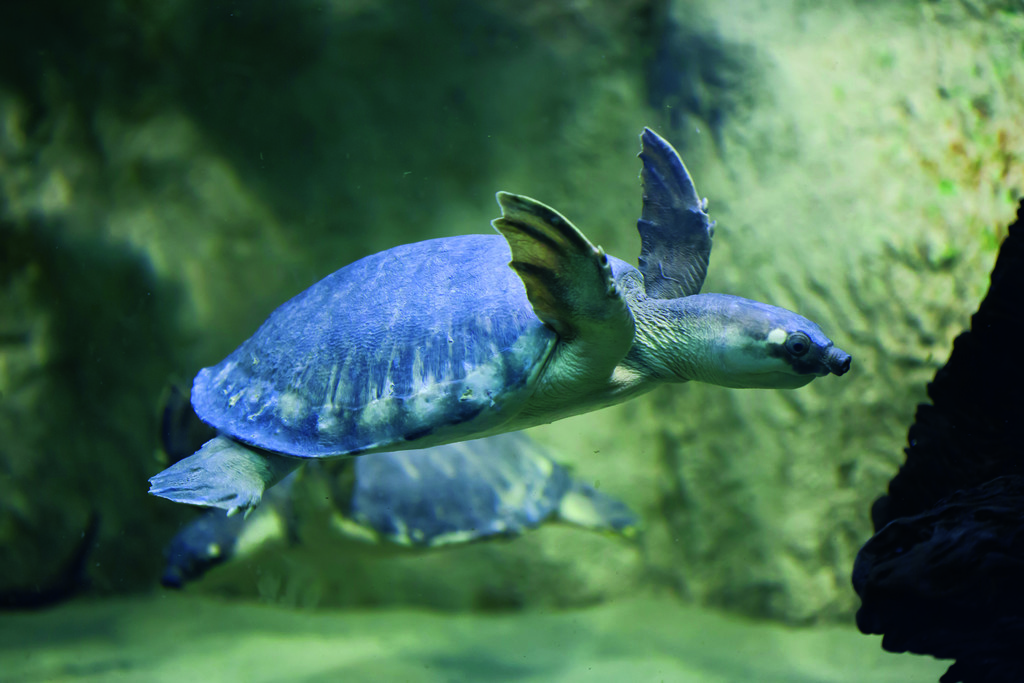How to properly feed semi-aquatic turtles?
Most species of semi-aquatic turtles vary considerably in their degree of carnivory and herbivory depending on their life stage. Young turtles are carnivores that feed on aquatic invertebrates, fish and amphibian larvae. However, as they mature, they become opportunistic omnivores that feed mainly on aquatic plants. Although adult turtles are primarily herbivorous, they supplement their diet with animal foods whenever they have a chance. So how to properly feed semi-aquatic turtles?
Changes in the diet of semi-aquatic turtles
Let me first explain why turtles change their diet and what the consequences are. Ontogenetic changes from meat to plant-based diets occur in several turtle families, including the Emydidae, Chelidae and Cheloniidae. A change in diet is often accompanied by habitat change. Hence the hypothesis that these changes have an ecological basis. In other words, they are related to differences in food availability in specific habitats. While ecological factors are likely important, digestive physiology may also play a role.
Semi-aquatic turtles have a relatively simple digestive tract. It consists of the mouth, esophagus, stomach, small intestine and large intestine. The common outlet of the digestive, excretory and reproductive systems is the cloaca.
Juveniles, due to limitations in food intake, are unable to meet their high nutritional requirements on a plant-based diet. Therefore, they reach for animal foods, which are abundant in energy and nutrients. In addition, they can be relatively easily digested by endogenous enzymes of the stomach and small intestine of vertebrates.

Plant tissues are much poorer in energy and nutrients. It is also worth remembering that vertebrates do not have enzymes capable of breaking down cellulose, the main component of plant cell walls. Turtles, like many other vertebrates, rely on microbial symbionts of the digestive tract to digest plant material. These symbionts ferment cell wall components. This results in by-products in the form of short-chain fatty acids, which are absorbed by the animal and used as an energy source. Adult turtles may have more difficulty searching for animal prey than juveniles. This has to do with their lower agility in the coastal zone, which is presumably where most potential prey is found.
How often should semi-aquatic turtles be fed?
Captive young turtles should be fed daily. Sub-adult but still vigorously growing turtles should get the food four times a week. Grown-ups will be fine if fed once to twice a week. They are great gluttons and may instinctively take excess food in preparation for a period of scarcity. Therefore, be careful not to overfeed them, as this leads to obesity, which can be dangerous. Give the amount of food that will be eaten in less than 3 minutes. The amount of food consumed depends on the temperature, and most turtles stop foraging below 16oC. Do not forget to remove uneaten leftovers immediately.
Avoid red meat in turtles’ diet
Since pond turtles eat aquatic organisms in the wild, feeding them red meat from terrestrial vertebrates is extremely dangerous. Slowly digested red meat can cause a buildup of toxins in the turtles’ digestive tract. This is one of many reasons why red meat should be eliminated from turtles’ diet. In addition to being a completely unnatural source of nutrition, it is also not nutritionally beneficial. Turtles live longer and benefit more from the protein of fish, shellfish, insects and aquatic plants.
Supplements for semi-aquatic turtles
If a captive diet based on fresh animal or plant foods is used, it should be supplemented with minerals and vitamins. In the case of semi-aquatic turtles, this task is made much more difficult because they take their food in water. Mineral and mineral-vitamin products for reptiles are usually in the form of a powder that would be immediately rinsed off the surface of the food.
Remember that the ratio of calcium to phosphorus in the diet should be at least 2:1. Abundant protein and fat causes excessively fast growth, obesity, and the formation of stones in the bladder and kidneys. In addition, with a deficiency of calcium and Vitamin D3 excess protein leads to metabolic bone disease (MBD) and shell deformation, including pyramidalization. If you use well-balanced, ready-made semi-aquatic turtle foods such as Biorept W and Reptiles Herbivore and Reptiles Carnivore containing Vit. D3and calcium with phosphorus in the correct proportion, no additional mineral and vitamin supplementation is needed.
I hope you now know how to feed aquatic turtles to keep them in great shape.











One thought on “How to properly feed semi-aquatic turtles?”